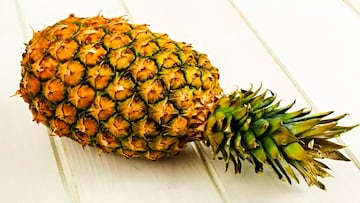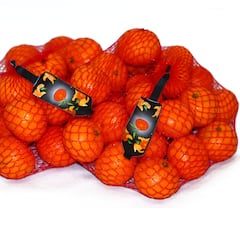How can pineapple skin resist a 1,800 degree Fahrenheit fireball?
Pineapple skin has been shown to withstand a temperature of 1,000 degrees Celsius without burning. What is the explanation for this phenomenon?

A recently released viral video shows a steel ball being heated up to 1,000 degrees Celsius (1,832 degrees Fahrentheit), transforming it into a fireball that is then placed on the skin of a pineapple.
At first glance, what happens seems like an unbelievable phenomenon, because it demonstrates that the pineapple skin does not burn and remains practically intact until the ball has cooled. What appears to be an impossibility is able to take place thanks to the Leidenfrost effect.
READ ALSO: The superfruit for lowering cholesterol and preventing hair loss
An experiment in which a 1000℃ iron ball was placed on the skin of a discarded pineapple.
— The Best (@ThebestFigen) May 16, 2024
pic.twitter.com/TjLNkX8Eh4
What is the Leidenfrost Effect?
The Leidenfrost Effect is the name given to a phenomenon in which a layer of vapor forms around a liquid when it is at a temperature much higher than its boiling point. Water boils above 100 degrees Celsius (212 degrees Fahrenheit), so this is its designated boiling point.
The pineapple, of course, contains water which is right underneath its skin, so it can be said that the incandescent steel ball multiplies the liquid’s boiling point by ten.
READ ALSO: No need for chocolate! The fruit that makes you happy
A very practical example to understand the Leidenfrost Effect is what happens when a frying pan is very hot and then several drops of water are put onto it. The droplet will move slightly unpredictably for a few seconds before disappearing. It would then appear to be floating. What takes place is that the water evaporates at such a speed that it creates a small space between itself and the pan.
Related stories
In the case of the skin of the pineapple, it would have burned if the fireball was, for example, at 150 degrees Celsius (302 degrees Fahrenheit), because this temperature is only slightly higher than the boiling point of water.
However, at 1,000 degrees it does not burn, because just like with the frying pan, the water evaporates so quickly that it makes a small space between the pineapple skin and the fireball. This space created is enough so that the fruit is protected during the short period the ball needs to cool.


Complete your personal details to comment